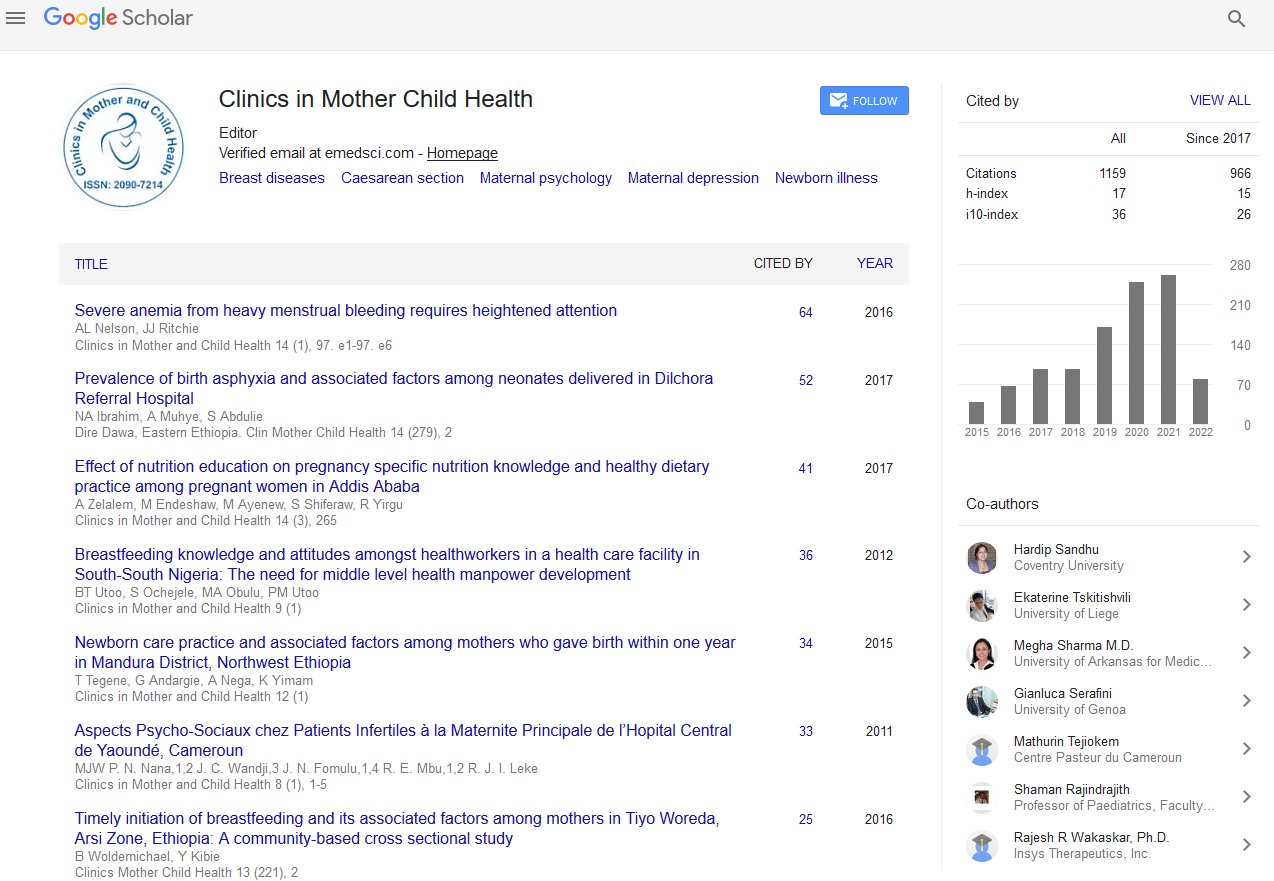Indexed In
- Genamics JournalSeek
- RefSeek
- Hamdard University
- EBSCO A-Z
- Publons
- Geneva Foundation for Medical Education and Research
- Euro Pub
- Google Scholar
Useful Links
Share This Page
Journal Flyer

Open Access Journals
- Agri and Aquaculture
- Biochemistry
- Bioinformatics & Systems Biology
- Business & Management
- Chemistry
- Clinical Sciences
- Engineering
- Food & Nutrition
- General Science
- Genetics & Molecular Biology
- Immunology & Microbiology
- Medical Sciences
- Neuroscience & Psychology
- Nursing & Health Care
- Pharmaceutical Sciences
Abstract
Magnitude and Factors Associated with Intra Uterine Contraceptive Device Method Utilization among Clients Attending Family Guidance Association Clinics in Addis Ababa, Ethiopia
Mohammed Ali, Wubegzier Mekonnen and Yohannes Tekalegn*
Introduction: Although intrauterine contraceptive device (IUCD) method is the safest, very effective, long acting and reversible contraceptive method, it has been used at a very low rate in many developing countries compared to other modern contraceptive methods.
Objective: The objective of the study was to assess the utilization of IUCD method and associated factors among women of reproductive age in Addis Ababa attending family Guidance Association of Ethiopia (FGAE) clinics.
Methods: Facility based cross sectional study was conducted on sample size of 326 respondents from March 1 to April 30, 2016. Data was coded and entered into Epi-info version 7 and analyzed using statistical package for social sciences version 20. Both descriptive and inferential statistics was employed to summarize and display data. Binary Logistic regression was used to detect factors associated with IUCD utilization. Statistical significance was declared at p<0.05.
Results: A total of 307 clients participated in the study, making 94.2% response rate. The mean age of the respondents was 34 years 6.6 years. Magnitude of current IUCD utilization was 35.2%. The median duration of IUCD use was 33 months (Range: 1 - 120 months). Binary logistic regression showed good knowledge of IUCD use (AOR: 1.8; 95% CI: 1.1-2.9) was associated with utilization of IUCD.
Conclusion: The present study revealed that the proportion of current IUCD utilization was optimal. Clients with good knowledge on the method were more likely to choose IUCD. Information dissemination to clarify myth and perceptions of IUCD method is recommended.
Published Date: 2019-08-06; Received Date: 2019-07-12


